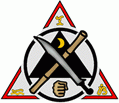Street Sports
written by Renato Magno When he was 13 years old, Jiu Jitsu entered Renato’s life. His father, Carlos Magno, used to train with the Gracie family. Renato soon started participating in tournaments. The first medal he ever won was gold. Judo, which he practiced at the time, ended up being sacrificed for this new passion. … Read more
